| Botanical Name |
|
| Family |
Piperaceae - The pepper family. |
| Pronunciation |
pep-er-ROH-mee-uh BLAN-da |
| Common Name(s) |
English: Large wild peperomia
|
| Plant Group |
- Ground Cover A plant with a low-growing, spreading habit, grown specifically to cover the ground.
- Shrub A woody plant of relatively low height, having several stems arising from the base and lacking a single trunk; a bush.
|
| Plant Size |
- Small to Medium
| Tree | 8m to 15m |
| Shrub | 75cm to 1m |
| Perennial/ground cover | 20cm to 40cm |
| Bulb | 30cm to 40cm |
| Succulent | 20cm to 40cm |
|
| Position |
- Canopy Shade Canopy shade is found below closely grown trees where some light filters through. Ideal for the protection of herbaceous plants.
- Dry Shade Shady areas where soil has poor water retention or are dependent on rain for their moisture needs.
- Light or Dappled Shade Found below trees with sparse, open foliage. Ideal for the protection of herbaceous plants.
- Partial Shade The area is in shade for part of the day and in full sun for part of the day.
|
| General Information |
- Drought Tolerance: Moderate The plant is moderately adapted to arid conditions and can survive short periods of drought and high temperatures without extra water.
- Evergreen Plants that have leaves all year round.
- Frost: Tender A plant that will not survive any frost or low winter temperatures.
- Prune hard after flowering Fast growing shrubs that grow lanky within a season. Cut off branches and stems of these plants to a third of their original length. This will increase the yield of flowers, improve the plants shape and enhance the structural strength of main branches.
- Water Moderate These plants will need some extra watering compared to water-wise plants. Plant them together, in at least some shade and in a convenient proximity to the house so that grey water can be utilised during times of drought.
|
| Specific Information |
Peperomia blanda is an evergreen, succulent herb which spreads from the base to form a small, dense shrublet between 30 and 60 cm tall. The stems are brittle, green or pink in colour. Both the leaves and the stems are slightly hairy. The flowers are minute and borne on long, thin, yellowish spikes. In is natural habitat in South Africa it tolerates a certain amount of drought in its habitat of dry, rocky river valleys. It grows between boulders or on rocky ledges, always in shade.
|
| Ad Break |
|
| Flowers |
| Description |
minute flowers on thin, upright spikes held above the plant
|
| Season |
- Summer to Autumn Plants will seldom bloom for the entire season as given in the list, but should flower during a period within these parameters.
|
| Colour |
|
| Growth Rate |
- Moderate to Fast Specifying growth rate can be very misleading as there is considerable variation of growth rate depending on type and species of plant, available water, supplementary feeding, mulching and general care, as well as the plants suitability and adaptability to the garden environment.
|
| Plant Uses |
- Border A strip of ground, at the edge of a driveway or path in which ornamental plants or shrubs are planted.
- Container Trees, shrubs and ornamental species that can adapt to growing in a restricted environment.
- Edging A low growing plant that provides softness or definition to the edges of a bed or walkway.
- Filler Either a fast growing tree or shrub used temporarily to fill in an area while the permanent plants grow to a desired size, or a plant used to fill gaps in borders or beds.
- Foliage Plant Plants grown because their foliage is colorful or unique. Many of these plants have insignificant flowers.
- Ground Cover Low-lying plants that spread fast, require minimal maintenance, and cover large expanses or bare areas between bulbs or shrubs. They provide protection from erosion and drought and improve the visual appearance of the garden.
- Interplanting Arranging and planting plants in the garden that have different blooming times and habits of growth, extending the amount of time in which the area is in flower.
- Pot Plant A plant that needs a protected environment on a patio or indoors.
- Suitable for coastal gardens Plants adapted to dry, sandy soil, forceful wind, limited rainfall and intense sunlight.
- Suitable for smaller gardens Such plants do not have invasive root systems, remain small or controllable and can often be grown in containers.
- Water Features These plants may have dramatic, lush foliage or graceful form. They do not shed excessive leaves and do not have invasive root systems.
|
| Distribution and Habitat |
along the coast from East London in the Eastern Cape to KwaZulu-Natal and Mpumalanga, and throughout tropical and subtropical regions of Africa, Asia, Australasia, Polynesia and the Americas, along river banks and in moist rock crevices
|
| Planting Suggestions |
In its natural habitat, this plant inhabits dry, rocky river valleys on rock ledges and between boulders, in light shade. Grown in the garden under more amicable conditions, Peperomia blanda can be a lush and unusual addition to any shady area. Soil must be well-drained or it will rot. Add some compost to the soil when planting and water moderately until the plant has become established. To encourage bushing, nip off the growing points in winter or early spring. After flowering, cut the flowering stems down to the base - fresh stems will be sent out.
|
| Medicinal Uses |
No data found for use in South Africa.
|
| Ad Break |
|


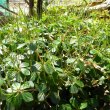
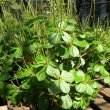
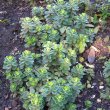
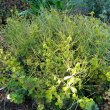
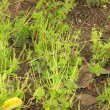
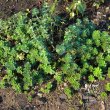



Discuss this plant
Share knowledge, ask a question or give an experience.